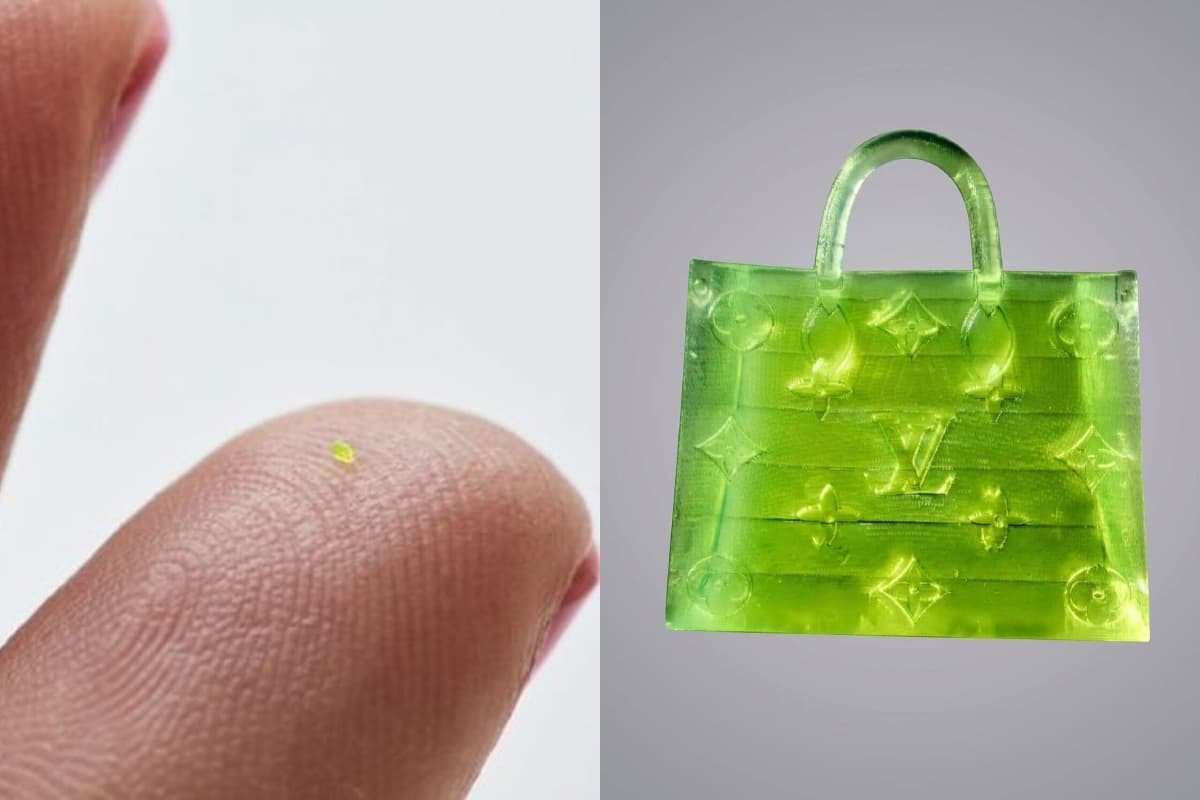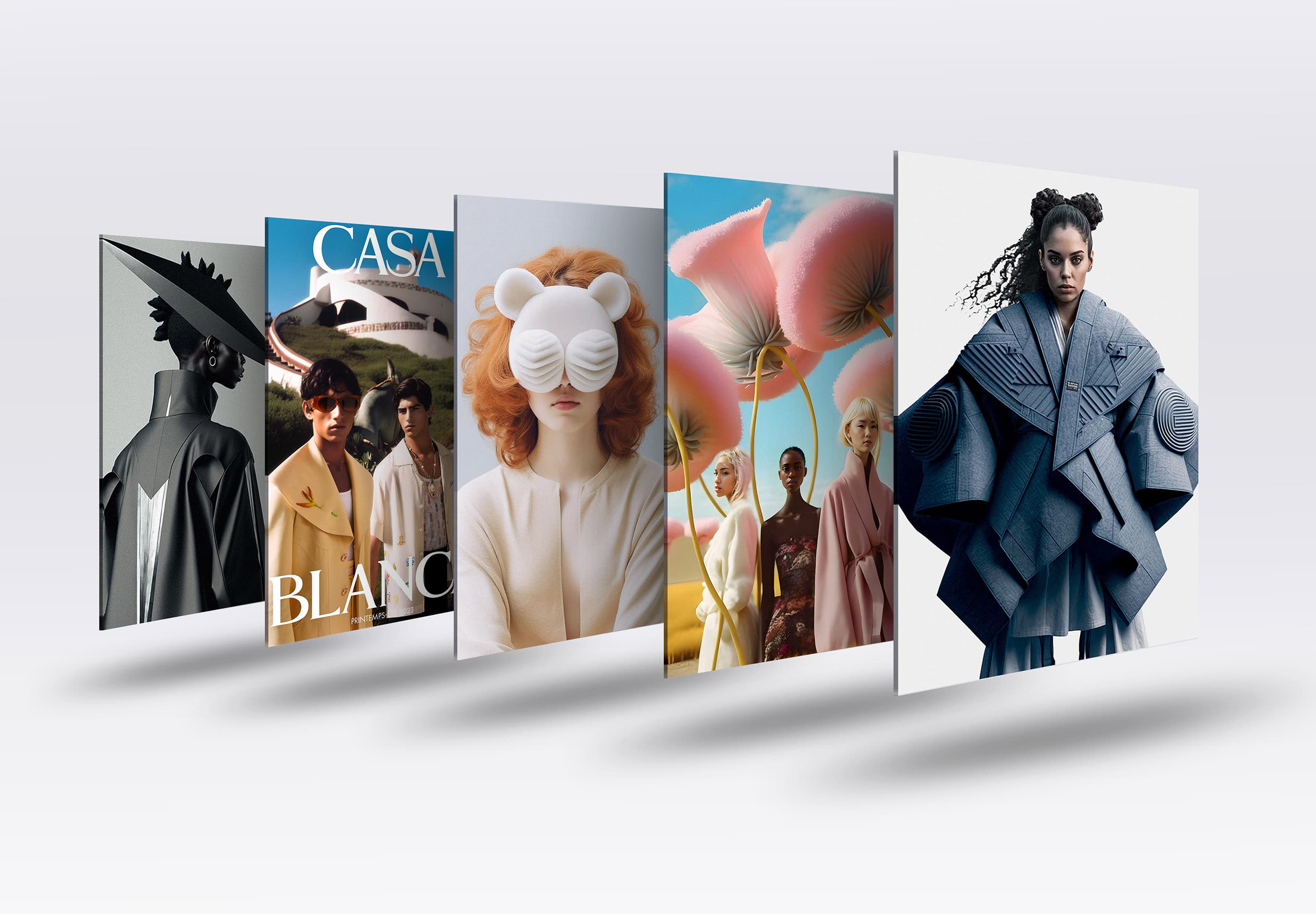How Fashion Companies Can Invest In & Capitalize On AI
By Anne McCarthy
We are living in strange and exciting times, and that’s especially true of the fashion world.
For instance, Louis Vuitton recently sold a purse “smaller than a grain of salt” for over $63,000. (That can certainly be filed under “strange times.”) And, excitingly, AI is rapidly transforming every corner of the world, including fashion. Generative AI potentially has the capability to bring clothes to market at an increased rate and sell them more efficiently, all while enhancing customer experience, posits a report from McKinsey.


What does the future of fashion meets AI look like? And how can a company or brand stay ahead of the curve? And is it as great of a threat as the headlines would like us to believe? (A recent Financial Times article, for instance, says succinctly in its headline: “Generative AI will upend the professions.”)
Index
- Key Takeaways
- Investing in AI
- Copyright & Generative AI
- Using AI for Advertising Campaigns
- Other Uses for Generative AI in Fashion
- What the Future will Look Like
Key Takeaways
– Generative AI is evolving at a rapid pace, so you should be deliberate in your approach when it comes to jumping on the AI bandwagon. Carefully look at the existing AI on the market and determine which type makes the most sense for you to invest your time and energy into learning and using.
– Image-based generative AI has complications around copyright protection. While a professionally photographed ad campaign is copyright-protected, the same doesn’t apply to AI-generated images that can also be used in an ad, says a recent landmark case involving Midjourney, an image-based generative AI.
– AI offers potential cost savings to fashion companies on a substantial scale, especially with research, advertising, and even store operations. However, history shows us (in the form of e-books and other examples) a human touch reigns supreme; consumers want to feel connected to the human element of a brand or product.
Investing in AI
For companies that are serious about investing in AI, be aware of what’s on the market, and what’s available to you. ChatGPT from OpenAI is one of the most notable forms of recent AI. It’s a type of generative AI which can develop code and content. Midjourney from research lab Midjourney, Inc., is image-based generative AI. Using prompts, it can create a scene or image, and this has the potential to revolutionize things like fashion ad campaigns. DALL-E and DALL-E-2 are the image-based generative AI from OpenAI, which create art and images using natural language.
A fashion company investing in AI could invest time into training its employees on how to effectively use generative AI for the betterment of the company. It may also look like connecting with AI startups and investing capital in the company in a way that’s beneficial for both parties.
Investing in AI as a fashion company can take many forms; a company should first consider its goals and needs and be intentional in how it invests. Research thoroughly, too. AI is developing at a rapid rate. What’s hot today could be yesterday’s news by tomorrow. For instance, while Midjourney is the leader in image-based generative AI technology, a recent report from Bloomberg recognizes a new AI name worth noting. For Bloomberg, Rachel Metz reports, “Artificial intelligence startup Stability AI is releasing a new model for generating images that it says can produce pictures that look more photorealistic than past efforts.”
As AI develops, we’ll see more competitors enter the market. Metz writes that “Stable Diffusion emerged as a key rival to OpenAI’s image generator Dall-E, and Stability AI has since trained and released numerous versions of the product.”
Copyright & Generative AI
Stable Diffusion, Midjourney, DALL-E, and DALL-E-2 are all generative AI image-based software that are potentially the most exciting –– and threatening, depending upon whom you ask –– types of AI for the fashion world.
Midjourney’s uses are limitless; it could be used to create book covers, editorial spreads, magazine photos, ad campaigns, and potentially even clothing designs.



Using images from generative AI gets complicated, though. Earlier this year, Reuters reported a case in which the images for a graphic novel that were created by the author, Kris Kashtanova, using Midjourney were incorrectly granted copyright protection. The U.S. Copyright Office said that Kashtanova should be granted copyright for the parts of the graphic novel she wrote, but not for the images she rendered via Midjourney. The U.S. Copyright Office said in a letter how it would reissue its copyright for the novel to omit images which “are not the product of human authorship.” Being that they’re not human-authored, it was stated that the images cannot be copyrighted.
Landmark cases like this one, which establish the limits around AI, will likely continue to pop up as AI becomes even more widespread and accessible. This copyright case has wide-reaching implications of which fashion companies wishing to use AI should take note: At present, non-human-created images (like one for an ad campaign) cannot be copyrighted, the way an Annie Leibovitz-shot campaign can be. Viewing AI from this lens, we can see how fashion companies are better protected by sticking with a human workforce, regarding some aspects of the fashion machines.
Using AI for Advertising Campaigns
While it’s a safer bet to stick with human-created ad campaigns solely from a copyright perspective, it’s clear to see why the idea of generative AI-created fashion campaigns are exciting.


The Wall Street Journal reported in June 2023 how Zipcar is one company dipping its toe into using AI for advertising campaigns. The article reports how there’s a sense of urgency among marketing professionals to embrace generative AI and learn how to best use it, and that extends to fashion industry marketing professionals, too. The cost savings of using generative AI over human labor is substantive and leads some companies to save thousands of dollars which would otherwise be spent on artistic human talent.
There are reports by people from some advertising-related firms saying that AI will be a “godsend” for agencies. And while the technology does present cost savings, astronomically shortened labor times (with a few strokes of the keyboard you could have a beautiful fashion campaign), and it’s at the forefront of technological culture, there are reasons to be intentional and thoughtful about what AI you engage with, and how.
Other Uses for Generative AI in Fashion
A detailed AI-focused report from McKinsey presents a laundry list of possible applications of generative AI in fashion. They include the following, McKinsey says:
– Merchandising and product
– Supply chain and logistics
– Marketing
– Digital commerce and consumer experience
– Store operations
– Organization and support functions

Merchandising and product applications could include converting sketches into full-blown images and enriching “product ideation.” While supply chain and logistics functions may be improved by using generative AI to help with research when negotiating suppliers. Marketing uses are somewhat endless and include generating marketing content, using targeted marketing for trends, and more.

It’s clear that using AI as a fashion company or brand has unlimited applications. If your company intends to use AI, it’s wise to be targeted in your approach and to consider desired uses beforehand. IT experts believe that the human touch is irreplaceable, and these kinds of AI tools only enhance human workflow, rather than threaten to replace it.
What the Future will Look Like
It’s hard to say exactly what the fashion industry will look like ten years from now, and how AI will impact it. However, it’s worth noting how history often repeats itself and how humans tend to fear change, like the kind of change that’s possible with generative AI.
It’s worth looking at the e-book (or, “electronic book”) for this discussion. E-books were once believed to be the death of the publishing industry. Readily available digital books at a low cost were predicted to upend the book publishing industry entirely. The New York Times suggested in a 1998 article that e-books might fully replace books, and that physical books would just become art objects.
Of course, that turned out not to be true, and e-book sales have slowly seen a decline since their initial popularity. Last year, in 2022, e-book sales declined in the U.S. by 6.5%.




Just like books, when it comes to fashion, people will always prefer the real thing – that human touch – and while it’s exciting to imagine all the possible applications of generative AI in the fashion world, history has shown us that we don’t need to fear the presence of AI in the industry. Rather, we can embrace it as a tool with which to reach new, exciting heights.



